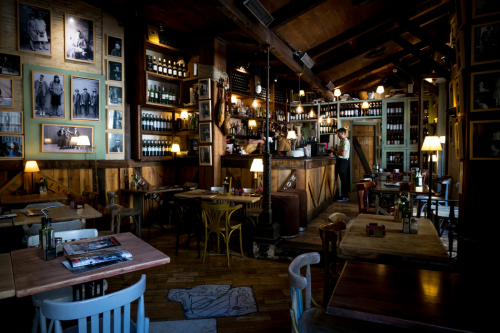How To Deal With Angry Customers At A Restaurant
Harry Gordon Selfridge, the founder of Selfridges department store in London, is...

Want to start a restaurant? The experts at Sling are here to help. In this article, we’ll show you how to start a restaurant in just 15 steps. Yes, transforming your dream into reality may seem a little daunting, but over half of the steps on this list don’t require anything more from you than a bit of hard work and determination.

The best way to start your journey to restaurant ownership is to work in one. Choose a restaurant that is similar in style and fare to the one you would like to own. Then learn all you can about:
These components are the foundation of every good restaurant.
Different types of restaurants appeal to different types of people. To help you identify your target market, ask yourself these questions:
The answer to those questions will dramatically influence the next few steps.

Based on your target demographic (identified in the previous step) and your own personal preferences, what style of service will your restaurant offer? The answer to that question usually falls into one (maybe two) of three categories:
After choosing a service style, you can then narrow down your choice of food to serve.
Food concept and service style are closely related, so you can often switch the order of these two steps. The important thing to remember is that choosing one style or food may mean excluding the other.
For example, if it’s your goal to run an upscale restaurant, pizza probably isn’t the right choice. Similarly, if you’ve always dreamed of running a fast food restaurant, you wouldn’t want to serve expensive steaks. The nice thing is that both of those foods (pizza and steak) can be served well in a midscale establishment.
Every business needs a plan, and restaurants are no different. When developing your restaurant’s business plan, focus on details such as:
Including all of this information in your business plan will help you secure the funding necessary for the last few steps on this list.
Food safety is an important issue to research before getting too deep into the restaurant-planning process. Food-safety regulations often demand specialized equipment (think stainless steel), which will certainly affect your bottom line.

Choose a name for your restaurant that is a reflection of your service style, your food concept, and/or your location. Whatever name you choose, be sure to file the appropriate paperwork with your Secretary of State and obtain an Employer Identification Number (EIN) from the federal government for tax purposes.
Your menu should match your food choice and your service style. If you want to open an upscale restaurant that caters to adults, you don’t want paper placemat menus and you don’t need to produce a kids menu. You do, however, need to put considerable thought into your wine list.
Your business plan will give you an accurate estimate of the amount of money you’ll need to get your restaurant up and running. Armed with that information, you can work to secure funding, be it from a bank or from investors. Don’t neglect to investigate government programs that work with new small-business owners.

Successful restaurants live and die by the old adage, “location, location, location.” When searching for the right place for your new restaurant, be sure to consider these details:
Don’t rush into purchasing or renting a bad location. The right place will come along eventually.
Once you’ve found the right space, get started designing the layout. Key components of every good layout include:
Be sure to focus on those first before getting sidetracked with concerns like the manager’s office or the street-facing signage.
When you’ve settled on a layout for your restaurant, you can start purchasing furniture and commercial kitchen equipment. To help you save money upfront, consider buying used equipment or leasing it from a reputable company.

Hiring good employees starts with writing a good job description. Once you’ve attracted the right pool of potential employees, follow this simple three-step procedure:
Another important factor to consider when planning to start a restaurant is how you’re going to schedule your employees. Do a bit of research, and investigate such questions as:
Once you have a handle on the type of schedule your restaurant needs to succeed, use employee scheduling and time clock software, like Sling, to make this difficult task a breeze.
Even before you open your doors, you should begin advertising and marketing your restaurant to your target market. Be sure to put some time and effort into your restaurant’s website because more people than ever before are using the internet to discover new places to eat. Don’t miss out on this deep well of customers.
More than half of the steps on this list are planning and preparation. That highlights the importance of those activities. It’s all too easy to get in over your head if you skip even one step.
Starting a restaurant is much like building a skyscraper: the bulk of the work occurs before the walls go up. So take your time, be patient, and you too can own and operate a successful restaurant.
For further restaurant-management resources and for help scheduling your employees, visit GetSling.com today.
See Here For Last Updated Dates: Link
This content is for informational purposes and is not intended as legal, tax, HR, or any other professional advice. Please contact an attorney or other professional for specific advice.
Schedule faster, communicate better, get things done.